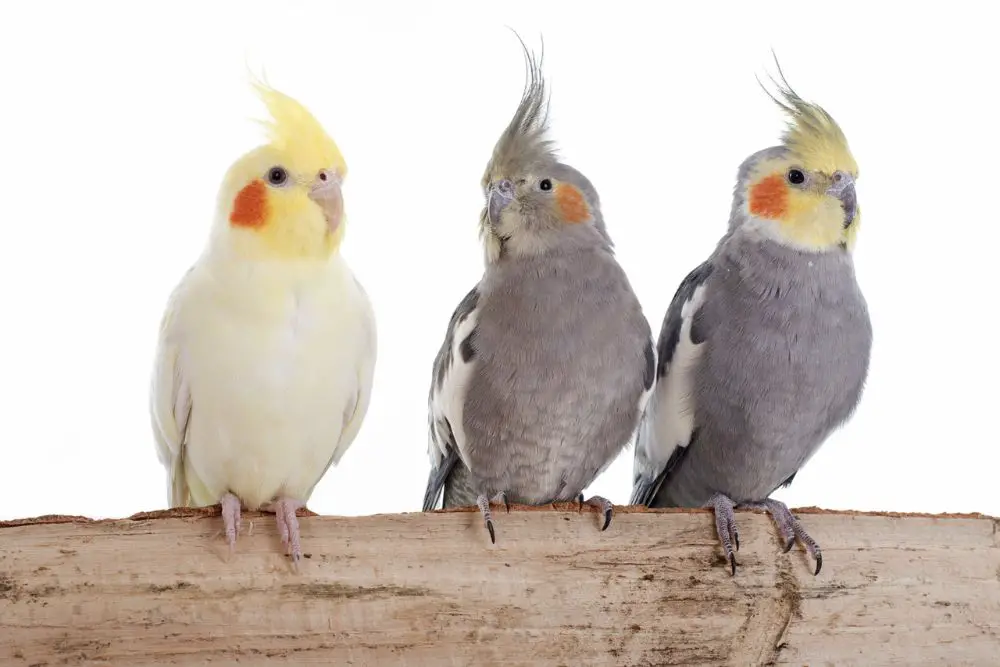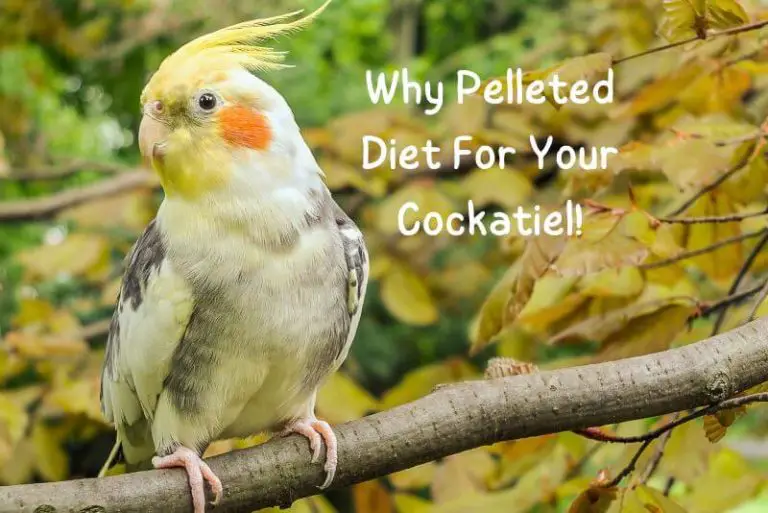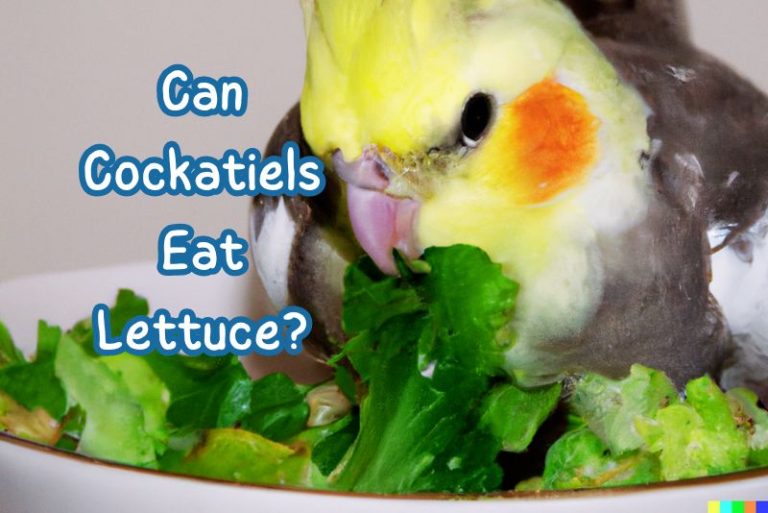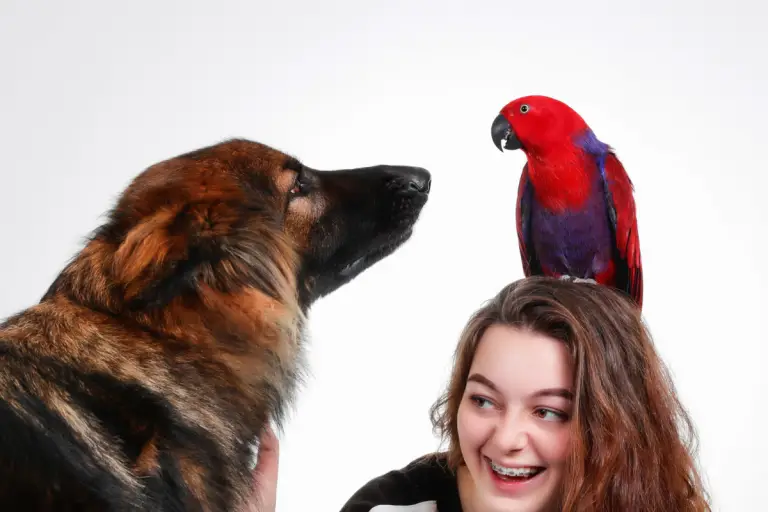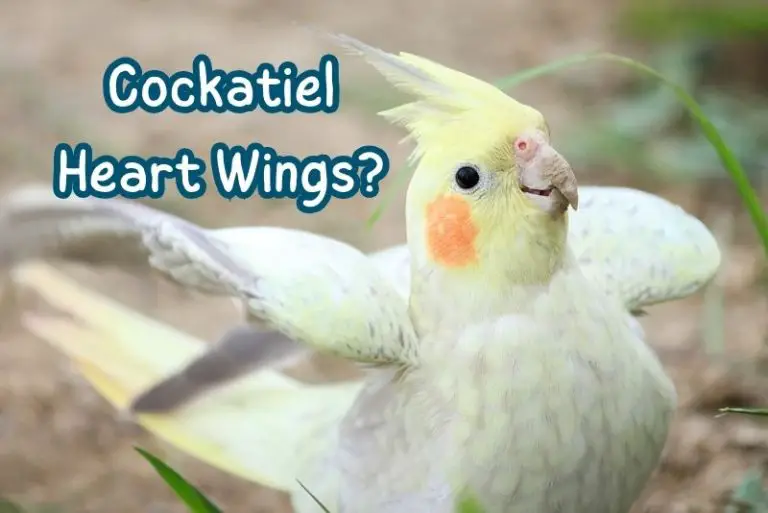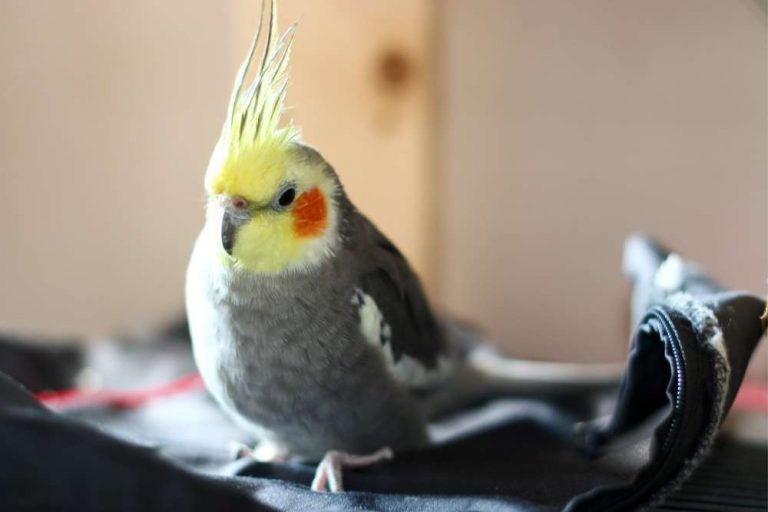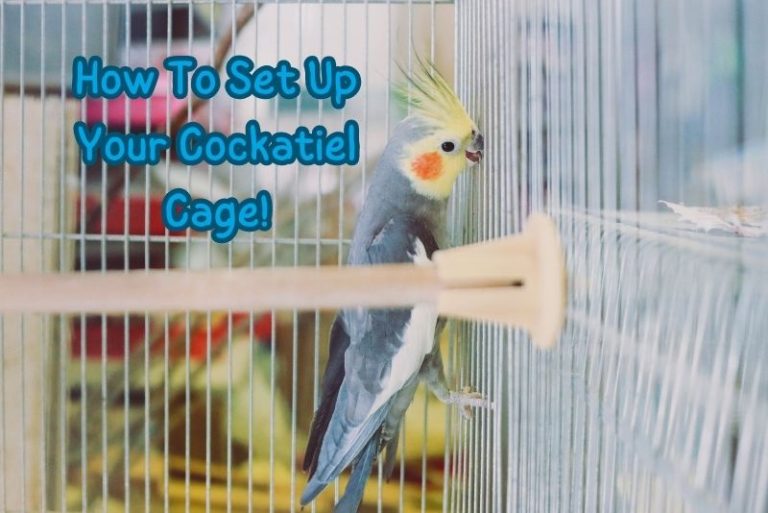Cockatiels are a popular choice for pet owners because they are easy to care for and have an affectionate nature.
Are Cockatiels parrots? You may be wondering.
Yes, they are parrots.
And where are cockatiels from?
Glad you asked!
These Pikachu parrots are native to Australia.
They are both cuddly and bold. They make great companions for people of all ages.
Cockatiels are also very curious and have feisty personalities, which makes them endlessly entertaining to watch and interact with.
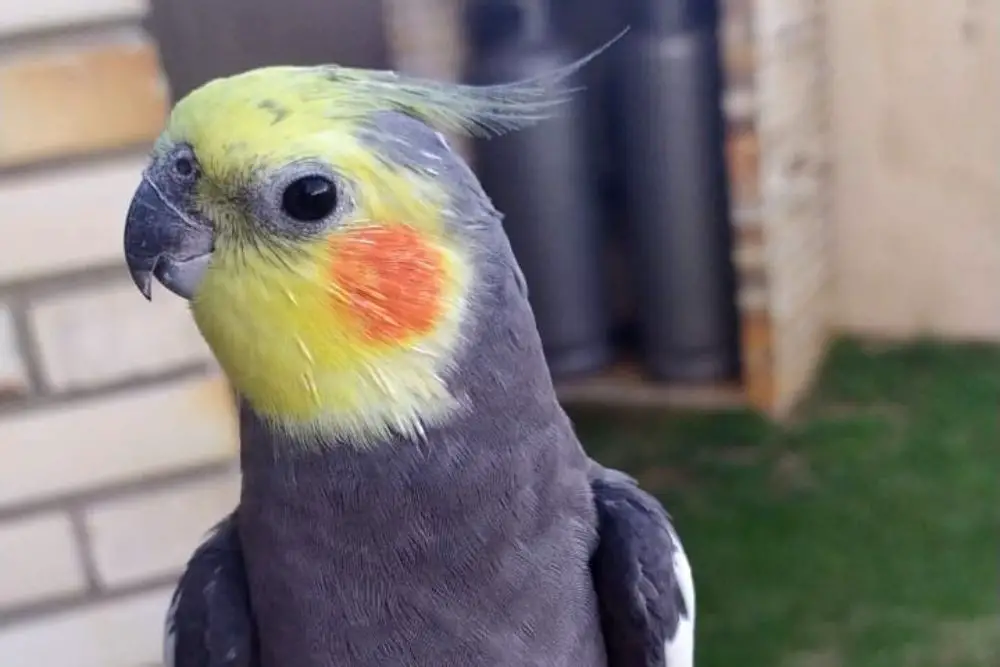
Quick Facts About Cockatiels
| Scientific Name: | Nymphicus hollandicus |
| Size: | Small, 12-14 inches (30-36 cm) |
| Lifespan: | Up to 20 years |
| Color: | Gray, White, Yellow |
| Sounds: | Known for whistling, also capable of mimicking speech |
| Activity Time: | Diurnal |
| Special Diet: | Herbivore, with a diet consisting of pellets, seeds, and fresh fruits and vegetables |
| Interaction: | Social, thrive in bonded pairs or small flocks |
| Temperament: | Gentle and affectionate, can be trained to do tricks |
Cockatiels are part of their own unique branch within the cockatoo family.
Cockatiels are globally sought after as household pets and companion parrots. They are relatively easy to breed and are second only to budgerigars in terms of popularity among caged birds.

Cockatiel: The Smallest Subfamily of Cockatoos
The cockatiel is a unique and fascinating bird with a rich history of classification and etymology.
Despite its small size, it is a member of the cockatoo family and shares many biological features with its larger relatives.
Its classification as a separate genus or inclusion in the Calyptorhynchinae subfamily is still a matter of debate, but its beauty and charm continue to captivate bird enthusiasts worldwide.
Taxonomy of Cockatiels
The cockatiel, also known as Psittacus hollandicus, is a unique bird that belongs to its own subfamily, Nymphicinae, within the larger Cacatuidae family.
This bird, native to Australia, was once classified as either a crested parakeet or a small cockatoo, but recent molecular research has confirmed its place in the cockatoo family.
Etymology of the Cockatiel
The name Nymphicus was given to the cockatiel by Wagler in 1832 due to the bird’s stunning beauty, which reminded European travelers of mythical nymphs.
In the Spanish language sometimes these birds are referred to as ninfa birds, meaning nymph birds.
The name hollandicus refers to Australia, which was known as New Holland at the time.
The cockatiel’s parakeet, or long-tailed parrot, is a unique morphological feature resulting from its smaller size and ecological niche.
Classification of Cockatiels
Previously, the cockatiel was classified as part of the Platycercinae, or broad-tailed parrots, but molecular studies have since confirmed its closer relationship to cockatoos.
In fact, mitochondrial 12S rRNA sequence data place the cockatiel in the Calyptorhynchinae subfamily, which includes dark cockatoos.
However, there is still debate over whether the cockatiel should be recognized as a separate genus or included in the Calyptorhynchinae.
Biological Features of Cockatiels
The cockatiel shares many biological features with other cockatoos, including an erectile crest, a gallbladder, powder down, suppressed cloudy layer, and facial feathers covering the sides of the beak.
This relationship is further supported by the existence of successful hybrids between the cockatiel and other cockatoo species, such as the galah.

Fascinating Characteristics of Cockatiels
Understanding the fascinating characteristics of cockatiels is essential for anyone considering them as pets.
The entertaining personalities, expressive crest, unique plumage, and vocal abilities of these birds make them an exciting addition to any household.
By providing proper care and attention, owners can enjoy the many joys of cockatiel companionship.
Cockatiel Personality And Behavior
Cockatiels are unique birds with distinct personalities that are reflected in their behavior. Understanding their moods and preferences can help us interact with them more effectively.
They are curious and playful birds that love to explore and interact with their environment.
Cockatiels are also social animals and enjoy the company of other birds, as well as their human owners. However, you should be cautious when your birds are out of the cage, as they might fly down to the floor, and other pets could harm them.
Be aware females might seek out dark, enclosed areas to nest in. You should keep those areas off-limits to prevent egg-laying and territorial behavior.
Fun Fact

Male cockatiels often seek out mirrors or other reflective items to whistle to.
One of the favorite activities of cockatiels is chewing on softwood, paper, or cardboard toys. They have a natural instinct to chew, which keeps their beaks healthy and strong.
They also enjoy playing with hard-plastic elements like beads, which can provide hours of entertainment for these active birds.
Expressive Crest of Cockatiels
One way to read a cockatiel’s mood is through the position of its crest feathers.
If they are standing straight up, the bird is likely startled or highly curious.
A flattened crest with hissing might indicate defensiveness and stress.
However, slightly held-back crest feathers with fluffed cheek feathers and a contented beak grinding signify relaxation.
Vocal Abilities of Cockatiels
Cockatiels are notably vocal birds, with the male’s calls being more diverse than those of the female.
They can learn to sing specific melodies and even synchronize them with human songs.
Some cockatiels have also been known to mimic human or environmental sounds without any formal training.
Due to their relatively low noise level compared to other parrots, cockatiels are an excellent choice for those who live in apartments and don’t want to disturb their neighbors.
Plumage of Cockatiels
The “normal grey” or “wild-type” cockatiel is predominantly grey with striking white flashes on the outer edges of each wing.
The male’s face is yellow or white, while the female’s face is primarily grey or light grey.
Both sexes feature a circular orange area on each ear, commonly referred to as “cheddar cheeks.” This orange coloring is more vibrant in adult males, while females often have more muted hues.
This variant of the bird allows for visual sexing, making it easier to distinguish between males and females.
Interestingly, the cockatiel’s tail feathers make up about half of its total length, setting it apart from most cockatoos.
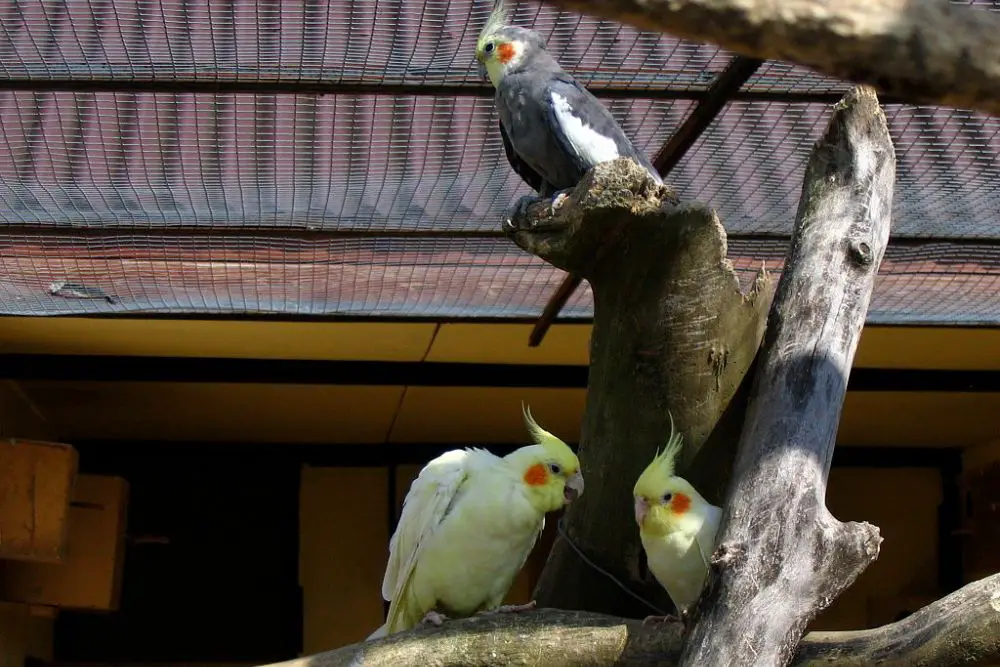
Understanding Sexual Dimorphism in Cockatiels
Sexual dimorphism in cockatiels refers to the physical differences between males and females, which become more evident after their first molt.
This distinction is mainly due to two pigments called melanin and psittacofulvins that play a crucial role in their coloration.
Understanding these differences can help owners identify and care for their pets more effectively.
The Appearance of Cockatiel Chicks
Cockatiel chicks and juveniles look very similar until their first molt.
They have yellow stripes on their tail feathers, yellow spots on their wings, a grey crest and face, and a dull orange patch on each cheek.
However, with modern mutations, it has become easier to distinguish between male and female chicks as soon as their feathers come in.
Sexual Dimorphism in Adult Cockatiels
Adult cockatiels with common coloring (grey body with yellow head) are sexually dimorphic, but it becomes evident only after their first molt, which happens around six to nine months after hatching.
Males lose the white or yellow barring and spots on the underside of their tail feathers and wings. The grey feathers on their cheeks and crest are replaced by bright yellow feathers, and the orange cheek patch becomes brighter and more distinct.
Females typically retain their greyish face and crest, a yellowish tint, and horizontal barring on the underside of their tail feathers.
Pigments Responsible for Cockatiel Coloration
Cockatiels get their coloration from two pigments called melanin and psittacofulvins.
Melanin provides the grey color in feathers, eyes, beaks, and feet, while psittacofulvins provide the yellow color on the face and tail, and the orange color of the cheek patch.
When both pigments are present, the grey color of melanin dominates over the yellow and orange of psittacofulvins.
Maturation of Male Cockatiels
As male cockatiels mature, the melanin content in their face decreases, making the yellow and orange psittacofulvins more visible.
An increase in melanin content in the tail leads to the disappearance of horizontal yellow tail bars.
Adult males tend to have louder and more complex vocalizations than females.

Identifying Cockatiel Color Mutations
Cockatiels are fascinating birds, and their color mutations only add to their allure.
With a range of options, from lutino to cinnamon to pearl, these birds are sure to capture your attention.
By understanding the different types of mutations, you can identify and appreciate the beauty of these unique creatures.
Understanding the Basics of Cockatiel Coloration
Before diving into the various mutations, it is essential to understand the natural coloration of cockatiels.
In the wild, cockatiels have grey feathers, with visible differences between males and females.
Male grey cockatiels have yellow heads, while females have grey heads.
Juvenile cockatiels tend to resemble females with pinker beaks.
The Pied Mutation: A Blotch of Color
One of the first mutations to emerge was the pied mutation, which appeared in California in 1949.
This mutation causes a blotch of color on an otherwise solid-colored bird. For example, a yellow cockatiel may have a grey blotch.
The Lutino Mutation: A Bright and Bold Option
Another popular color mutation is the lutino, which was first seen in 1958. These birds lack the grey feathers of their wild counterparts and are white to soft yellow.
However, inbreeding has led to many lutino cockatiels having a small bald patch behind their crests.
Cinnamon Mutation: Warm and Brown
The cinnamon mutation, first seen in the 1950s, is very similar in appearance to the grey cockatiel. However, these birds have a warmer, browner coloration.
Pearling Mutation: A Unique Pattern
Pearling was first seen in 1967 and appears as a feather of one color with a different colored edge, such as grey feathers with yellow tips.
This unique pattern is usually on the bird’s wings or back.
Other Mutations: Albino, Fallow, Emerald/Olive, and More
Other mutations include:
- albino
- fallow
- emerald/olive
- dominant and recessive silver
Mutations exclusive to Australia:
- fallow
- faded
- dilute/pastel silver
- silver spangle
- platinum
- suffused
- pewter
Face-altering mutations such as:
- whiteface
- pastel face
- a dominant yellow cheek
- a sex-linked yellow cheek
- gold cheek
- cream face
- Australian yellow cheek
Complex Mutations: Multiple Mutations in One Bird
Cockatiel color mutations can become even more complex, as one bird can have multiple mutations.
For example, a yellow lutino cockatiel may have pearling-white spots on its back and wings – making it a double mutation.
An example of a quadruple mutation would be a cinnamon cockatiel with yellowface coloring with pearling and pied markings.
Cockatiel Mutation Chart
| Mutation | Description |
|---|---|
| Pied | A blotch of color on an otherwise solid-colored bird |
| Lutino | Lack of grey feathers, white to soft yellow in color |
| Cinnamon | Similar in appearance to the grey cockatiel, with a warmer, browner coloration |
| Pearling | A feather of one color with a different colored edge, usually on the bird’s wings or back |
| Albino | Lack of pigment, white with red eyes |
| Fallow | Cinnamon coloration with yellow sections |
| Emerald/Olive | Olive green coloring |
| Dominant Silver | Silver coloring with a bold pattern |
| Recessive Silver | Silver coloring with a softer pattern |
| Australian Fallow | Similar to fallow but with more orange/yellow in the feathers |
| Faded/West Coast Silver | Dilute silver coloring with a faint pattern |
| Dilute/Pastel Silver/East Coast Silver | Pale silver coloring with a faint pattern |
| Silver Spangle/Edged Dilute | Dilute coloring with a bold pattern |
| Platinum | White/silver coloring with a faint pattern |
| Suffused/Australian Olive | Olive green coloring with a faint pattern |
| Pewter | Grey/silver coloring with a faint pattern |
| Whiteface | White feathering around the face |
| Pastelface | Pale coloring around the face |
| Dominant Yellow Cheek | Bright yellow cheeks |
| Sex-Linked Yellow Cheek | Yellow cheeks only on females |
| Gold Cheek | Bright orange cheeks |
| Cream Face | Cream-colored feathering around the face |
| Australian Yellow Cheek | Yellow cheeks only on males |
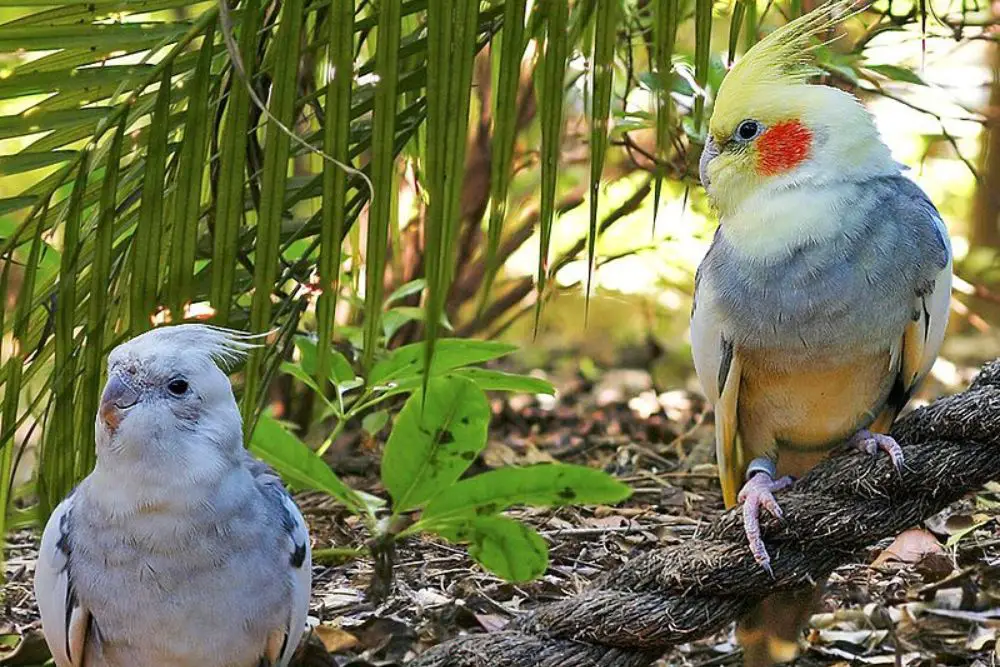
Cockatiels: A Look at their Distribution and Habitat
Cockatiels are fascinating birds that have adapted well to their arid and semi-arid habitats in Australia.
Their distribution is largely concentrated in these regions, where they are always in close proximity to water sources.
They are well-adapted to survive in harsh conditions by constantly searching for food and water sources, and are known for their nomadic behavior.
While they mainly feed on seeds, they have been known to feed on cultivated crops, which can cause problems for farmers.
Distribution
The distribution of cockatiels is largely concentrated in the arid or semi-arid regions of Australia, where they are always in close proximity to water sources.
They are absent from the most fertile corners of the country, such as the southwest and southeast, the deepest Western Australian deserts, and the Cape York Peninsula.
Cockatiels are the only species of cockatoo that can sometimes reproduce in their first year of life, despite their absence in certain areas. This may be due to their ability to adapt to a variety of environmental conditions.
Habitat
Cockatiels, a bird species native to semi-arid regions of Australia, are well-suited to their harsh environment.
These social birds are typically observed in pairs or small flocks, constantly searching for water and food sources.
Their diet is mainly seed-based, consisting of plants such as Acacia, wheat, sunflower, and Sorghum.
However, they have been known to feed on cultivated crops, which can cause problems for farmers.
Despite their nomadic behavior, cockatiels are territorial when it comes to their nesting sites, often engaging in aggressive behavior towards other birds.
This may be due to the scarcity of suitable nesting sites in their habitat. In the wild, they construct their nests in tree hollows, preferably near a source of fresh water, which is why eucalyptus trees are a popular nesting site.
While cockatiels are able to survive in their arid and semi-arid habitats, they are also known to gather in large groups near a single water source.
This can be a breathtaking sight to behold, as the birds socialize and interact with each other.
These adaptable birds are not only thriving in the wild, but also in captivity. They are easy to breed in captivity, making them an affordable option for bird lovers.
Cockatiels are natural ground foragers, and in the wild, they are constantly on the move in search of new resources.
However, their ability to thrive in captivity can also cause problems for farmers, as they have been known to feed on cultivated crops.

The Long and Surprising Lifespan of Cockatiels
Cockatiels are fascinating creatures with a surprisingly long lifespan.
While the exact lifespan can vary depending on a range of factors, providing your cockatiel with the best possible care can help promote longevity and ensure a happy and healthy life for years to come.
Cockatiel Life Span

Cockatiels have an average life span of 16-25 years in captivity.
Average Life Expectancy of Cockatiels
Cockatiels are popular pets known for their distinctive crests and charming personalities.
But how long can they live?
According to experts, these birds have a relatively long lifespan in captivity, with an average life expectancy of 16-25 years.
However, there is significant variability in individual lifespan, with some cockatiels living as long as 32 years or even longer.
Factors Affecting A Cockatiels Lifespan
To ensure a long, healthy life for cockatiels, provide proper care and nutrition, avoid inbreeding, and maintain a clean, stress-free environment.
Factors Affecting Cockatiel Lifespan:
- Genetics
- Diet
- Environmental Conditions
Genetics: Inbreeding can lead to genetic disorders and shorten lifespan. Avoid inbreeding and choose healthy, genetically diverse birds for breeding.
Diet: A balanced diet with nutrients, vitamins, and minerals is important for a long lifespan. Cockatiels have a primarily seed-based diet, but supplement with fresh fruits and vegetables, cooked eggs, whole grains, and lean protein.
Environmental Conditions: Clean, stress-free environments with exercise and social interaction promote longevity. Provide a spacious cage or aviary, toys, and regular interaction with owners or other birds.
Health Issues and Common Diseases In Cockatiels
While cockatiels are generally hardy and resilient birds, they can still suffer from a range of health issues and diseases.
With proper care, however, their lifespan and quality of life can be improved. It’s important to be vigilant and attentive to any signs of illness and seek veterinary care immediately if necessary.
Here are some of the most common health problems in cockatiels:
Respiratory Infections
Cockatiels are prone to respiratory infections, which can be caused by a variety of factors such as poor ventilation, drafts, and exposure to irritants like cigarette smoke. Symptoms of respiratory infections include wheezing, coughing, and difficulty breathing. If left untreated, respiratory infections can lead to more serious health problems like pneumonia.
Feather Picking
Feather picking is a common behavioral problem in captive cockatiels, where they pluck their own feathers. This can be caused by a range of factors including boredom, stress, poor diet, or skin irritation. Feather picking can result in skin damage, infections, and a higher risk of injury due to loss of insulation and protection from feathers.
Egg-Binding in Females
Female cockatiels can suffer from egg-binding, where they are unable to lay their eggs. This can be a life-threatening condition and requires immediate veterinary care. Causes of egg-binding include poor nutrition, lack of calcium, and stress.
Obesity
Obesity is a common problem in captive cockatiels, which can lead to a range of health complications such as diabetes, heart disease, and arthritis. It can also shorten their lifespan. The primary causes of obesity in cockatiels are overfeeding and lack of exercise.
Regular Check-ups and Preventive Care
Regular check-ups and preventive care are essential for maintaining the health and well-being of your cockatiel.
By providing a balanced diet, keeping their living area clean and well-ventilated, and seeking out proper veterinary care, you can help ensure that your bird lives a long and healthy life.
Preventive Care
To prevent health issues, it’s essential to provide your cockatiel with a balanced diet that includes a variety of seeds, pellets, and fresh fruits and vegetables.
This approach can help prevent obesity and ensure that your bird is getting all the essential nutrients they need to stay healthy.
In addition to nutrition, keeping your cockatiel’s living area clean and well-ventilated is crucial for preventing respiratory infections.
Regularly cleaning and disinfecting your bird’s environment can help minimize the risk of infection and promote overall health.
Regular Check-ups
While preventive measures are essential, it’s also important to seek out proper treatment if your cockatiel does develop a health issue.
Regular visits to a qualified avian veterinarian can help identify and treat any health issues early on, improving the chances of a full recovery.
During check-ups, your veterinarian will perform a physical exam and may recommend additional testing, such as bloodwork or X-rays, to check for any underlying health issues.
Your veterinarian can also provide advice on proper nutrition, hygiene, and other aspects of cockatiel care.
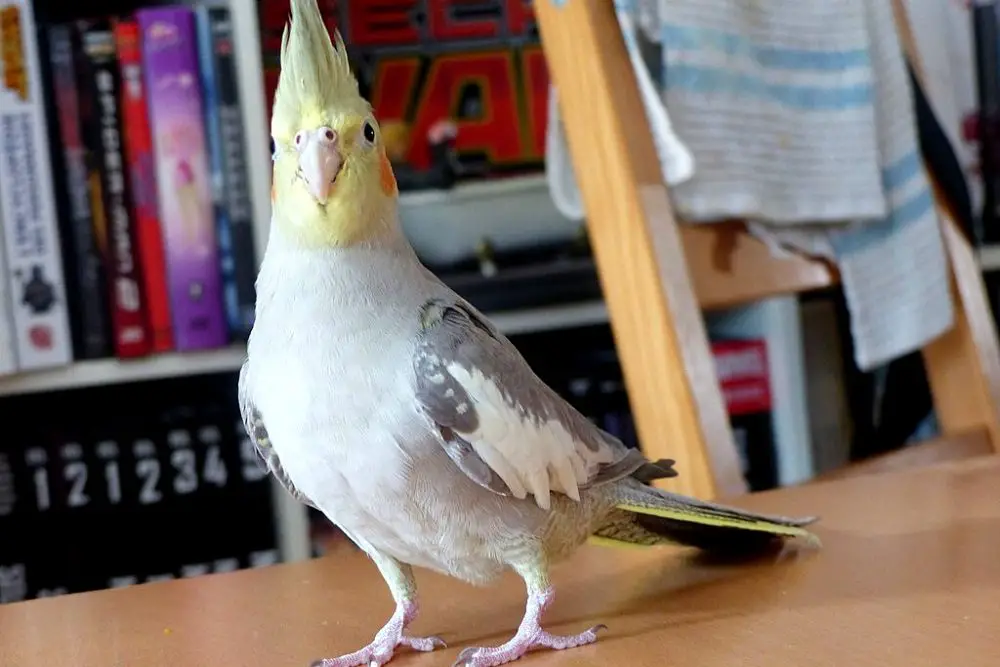
Getting Your Own Cockatiel
If you’re thinking about getting a pet bird, a cockatiel can be a wonderful companion. But before you bring one home, there are a few things you should consider.
Where to Find Cockatiels
Cockatiels are available at:
- pet stores
- avian-specific retail stores
- bird breeders
- through rescue/adoption organizations
Adopting a Cockatiel
If you’re adopting a cockatiel, ask about its history, including any behavioral issues, phobias, or preferred interactions. Know the bird’s diet and favorite treats, and find out if it has seen a veterinarian and if there are any health issues.
Buying a Young Cockatiel
If you’re buying a young cockatiel, make sure it’s fully feathered and weaned. Look for signs of a healthy bird, such as alertness, clean feathers, bright eyes, and clean nares. Ask if the pet store or breeder offers a health guarantee or a free visit to a veterinarian.
Providing Proper Care
Whether you acquire your cockatiel from a breeder or a pet store, proper care, attention, and a healthy diet are essential for their well-being.
The first step in providing optimal care for your cockatiel is to ensure they have a spacious and comfortable cage that allows for perching and flying.
It’s crucial to choose a cage that’s appropriate for your bird’s size and provides plenty of room for movement.
Additionally, you should equip the cage with a variety of toys that stimulate and engage your bird’s mind, and promote physical activity.
A balanced diet consisting of seeds, fruits, vegetables, and fresh water should be provided daily to meet your cockatiel’s nutritional needs.
It’s also essential to monitor your bird’s health, and any changes in their eating habits or behavior should be addressed promptly.
Regular bathing and grooming are also necessary to maintain good hygiene and prevent feather problems.
Cockatiels require daily exercise to keep them healthy and happy, and providing time outside their cage for playtime is crucial. By doing so, you’ll not only promote your bird’s physical health but also their mental and emotional well-being.
Finally, regular visits to a veterinarian are recommended to catch any potential health issues early. A qualified avian veterinarian can provide guidance on maintaining your cockatiel’s health and diagnose any underlying health problems.
Cockatiel FAQs
Q: Is a cockatiel a good pet?
A: Yes, cockatiels make great pets because they are social, have lots of personality, and are relatively easy to care for.
Q: Are cockatiels easy to care for?
A: Yes, cockatiels are relatively easy to care for as long as they have a healthy diet, a clean environment, and plenty of socialization.
Q: Can cockatiels be kept alone?
A: Yes, cockatiels can be kept alone and will bond with their human companion. However, they are social birds and may do better with a companion if their owner cannot spend a lot of time with them.
Q: Do cockatiels recognize their owners?
A: Yes, cockatiels can recognize their owners and bond with them.
Q: Will a cockatiel bite you?
A: Cockatiels can bite, especially if they feel threatened or scared. However, with proper socialization and training, biting can be minimized.
Q: How often should you bathe your cockatiel?
A: Cockatiels should be bathed once a week or as needed. Some cockatiels may prefer misting with water instead of a full bath.
Q: What kind of toys do cockatiels like?
A: Cockatiels like toys that they can chew on, swing from, and play with. Examples include bells, ropes, and swings.
Q: Do cockatiels sing?
A: Yes, cockatiels can sing and even learn to whistle tunes.
Q: Should I cover my cockatiel’s cage at night?
A: Yes, covering a cockatiel’s cage at night can provide a sense of security and help them sleep. However, it’s important to make sure there is enough ventilation and that the cover does not touch the cage.
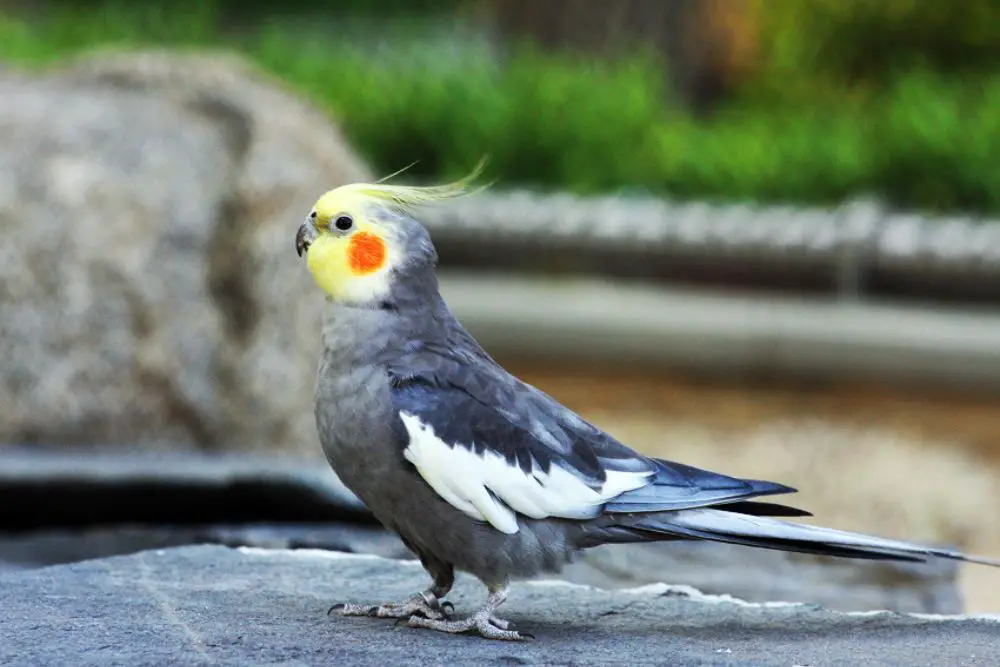
Summary of Cockatiels As Pets
Cockatiels as pets:
- Cockatiels make great pets because they are easy to care for and have lots of personality.
- They are extremely social and love to interact with their human companions.
- Cockatiels enjoy playing with toys and can learn to sing.
- They come in various color variations including gray, pearl, white-faced, white-faced pearl, lutino, pied, and more.
- Cockatiels bond easily with their pet parents and should be socialized daily.
- They can be kept alone to bond with their pet parent or in pairs to bond with each other.
- Different types of birds should not be housed together with cockatiels.
Do you think you might want a cockatiel? Let us know in the comments!
-Kacey
P.S. Did you like this article? Fly on over to:
- Cockatiel Care 101: How to Keep Your Feathered Friend Thriving
- How to Set Up a Cockatiel Cage
- Why Pelleted Diets are Essential for Cockatiels
- Cockatiel Pellets: Top Choices for a Healthy Diet

